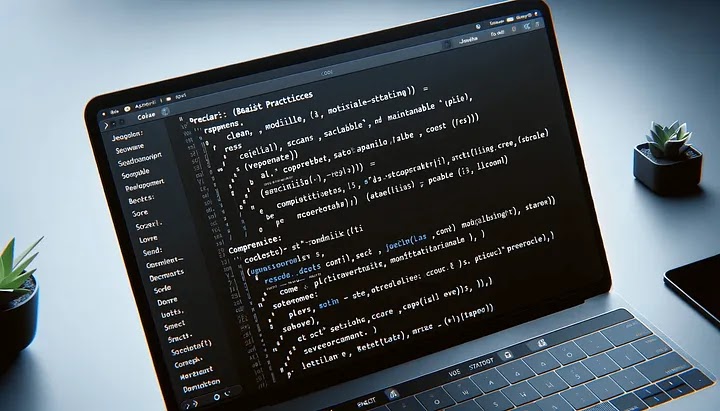Introduction
In the vast realm of web development, ReactJS has emerged as a powerful and widely-used library for building user interfaces. As developers dive into the React ecosystem, it becomes imperative to adopt best practices to ensure code quality, maintainability, and optimal performance. In this article, we'll explore 20 ReactJS best practices derived from meticulous code reviews, providing valuable insights for developers aiming to enhance their React development skills.
Consistent Code Styling
Consistency in code styling is not just a matter of aesthetics; it significantly contributes to code readability and maintainability. ReactJS developers should adhere to a standardized code styling guide. Tools like ESLint and Prettier can be integrated into the development workflow to enforce consistent styling, ensuring a harmonious and collaborative coding environment.
Component Structure
The organization of components within a React application plays a pivotal role in project scalability. A well-structured component hierarchy enhances code clarity and facilitates easier debugging. Developers should follow a modular approach, grouping related components together and maintaining a clear directory structure.
State Management
Efficient state management is at the core of React development. Developers should be mindful of how state is managed and updated within components to avoid unnecessary re-rendering. Utilizing state management libraries like Redux can provide a centralized and scalable solution for handling complex state logic.
Use of Functional Components
With the introduction of React hooks, functional components have become the preferred choice over class components. Functional components are concise, promote code reusability, and seamlessly integrate with hooks like useState and useEffect. Transitioning from class to functional components enhances code simplicity and readability.
Props Usage
Props serve as the communication bridge between React components. Best practices involve passing props in a controlled and explicit manner, avoiding unnecessary coupling between parent and child components. Proper validation of props using PropTypes adds an additional layer of code robustness.
Error Boundaries
Error boundaries are essential for gracefully handling runtime errors in React applications. By encapsulating error-prone components within error boundaries, developers can prevent entire application crashes and provide users with meaningful error messages. Implementing error boundaries is a proactive measure towards ensuring a stable user experience.
Conditional Rendering
Conditional rendering allows developers to show or hide components based on certain conditions. This practice enhances the flexibility and responsiveness of React applications. Leveraging conditional rendering effectively can lead to more dynamic and interactive user interfaces.
React Hooks
React hooks have revolutionized state management and side effect handling in functional components. Developers should embrace hooks like useState, useEffect, and useContext to streamline component logic. Adhering to established patterns when using hooks ensures consistency across the codebase.
Code Splitting
Code splitting is a performance optimization technique that involves breaking down the application code into smaller, manageable chunks. This not only reduces the initial load time but also allows for lazy loading of components, enhancing overall application performance. Implementing code splitting is particularly crucial for large-scale React applications.
Optimizing Performance
Performance optimization is an ongoing concern in web development. React developers should adopt strategies like memoization, efficient event handling, and minimizing unnecessary renders to enhance application speed. Tools like React Profiler can aid in identifying performance bottlenecks.
Security Considerations
Addressing security concerns is paramount in any software development process, and ReactJS is no exception. Developers should be mindful of potential vulnerabilities such as Cross-Site Scripting (XSS) and implement measures like input validation and secure coding practices to mitigate risks.
Testing Strategies
Comprehensive testing is a cornerstone of robust React applications. Developers should employ unit testing and integration testing to validate the functionality of individual components and their interactions. Tools like Jest and React Testing Library can assist in creating and running effective tests.
Documentation Practices
Thorough documentation is crucial for collaborative and maintainable code. Developers should document components, APIs, and any custom utilities to facilitate easy onboarding for new team members. The use of tools like JSDoc and Markdown can enhance the clarity of documentation.
Continuous Integration and Deployment
Integrating continuous integration (CI) and continuous deployment (CD) into the development workflow automates testing and deployment processes. This ensures that code changes are validated and deployed seamlessly, reducing the likelihood of introducing bugs into the production environment.
Conclusion
In conclusion, adhering to best practices in ReactJS development is a journey towards creating scalable, maintainable, and high-performance applications. By embracing consistent code styling, efficient state management, and other recommended practices, developers can navigate the complexities of React development with confidence. Continuous learning and adaptation to evolving best practices are key to staying at the forefront of ReactJS development.
FAQs
Is it necessary to transition from class components to functional components?
- While not mandatory, transitioning to functional components with hooks is recommended for improved code simplicity and readability.
How can I ensure the security of my ReactJS application?
- Secure your application by implementing input validation, avoiding direct manipulation of the DOM, and staying informed about potential security vulnerabilities.
Why is documentation important in React development?
- Documentation facilitates collaboration, onboarding of new team members, and ensures the maintainability of the codebase.
What tools can I use for ReactJS performance monitoring?
- Tools like React Profiler and browser development tools can assist in identifying and addressing performance

Post a Comment